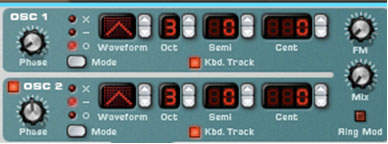When programming a beat, your kick drums will always act as the underpinning element, keeping the pace and meter of the pattern. Practically every sub-genre of electronic and dance music has at least one signature kick sound that evokes memories of dozens of other tracks. Techno music has the thumping 909 sound, Hip-hop has the smooth subby 808 kick and Drum & Bass has the instantly recognizable “Amen” boom.

Drum Pads
However, if you program your own beats, and you listen to one of them alongside a song by one of your favourite artists, you may find that your kick sounds weak, thin or woolly. As much as beat programming is an art, beat production is a science, and there’s a few tricks you can employ to help your low end carry some real weight.
Equalization
EQing is arguably the most powerful tool in your arsenal when producing. It allows you precisely to define where each sound will sit in the frequency band, preventing each individual element from overpowering and obscuring those around it. With the kick drum, you can use it to boost the volume in a specific band to help focus the sound in the crucial area, without saturating the mix with unnecessary bass frequencies.

Equalization
You’ll need a parametric EQ device or plug-in to achieve the best results. Solo your kick channel and create a band pass filter. Turn the gain up high, and the Q down low, creating a narrow spike in the frequency band. Turn the frequency down to between 50 and 100Hz, then roll the frequency dial back and forth between the two, looking for the frequency that adds the most weight and body to the sound. This is called “Frequency Sweeping.” Once you have settled on the most appropriate frequency, reduce the gain and un-solo the channel. Tweak the gain until it makes the kick prominent, but not overpowering.
Compression
Compression is a tricky effect to get a grip on 2at first. When done correctly, its effect is still really subtle, and you might not even notice it is there. Compression reduces the volume peaks of a sound and boosts the quietest points, bringing the volume of the track closer in line with the overall average volume. The main reason for this is it allows you to push the gain a little harder, without having to worry about unexpected peaks that could clip.

Compression
Start by setting the threshold control. Turn it up to full, then watch the “level” meter as you gradually reduce it. You want the meter to show about 75% on each kick hit. Then alter the “Ratio” control until you get a smooth sound without muffling the kick. The “Attack” and “Release” controls set the duration of the effect. Alter these if you need to reduce some of the “Pumping” that can occur when kicks happening close together cause the parameters of the effect to overlap.
Doubling
Doubling up your kicks is a good way to add imposing weight without simply increasing the volume. Use a MIDI synth with a simple sine wave, and copy the pattern of the kick drum. You can copy every kick drum hit to the sub channel, or just the downbeats. Having some kicks with a doubling hit and some without can really add some interesting variation to the beat, adding some real movement and “life.” You can use the “Octave” control on the synth generator to get even lower.

Doubling up your kicks
If a sub-bass sound doesn’t suit your track. Try creating a copy of the original kick sound, then slightly tweak the filter and volume settings to create some realism. A real drummer doesn’t strike every drum exactly the same every time, so intentionally creating some dynamic modulation can help to break up the monotony of a sampled kick.
After you’ve fattened up your kick, listen back to the track and compare it to your reference song again. You should hear a noticeable improvement, and if not, you should be able to hear where it is lacking. Is there too much top end? Is it clipping out and leaching kinetic energy from the speakers? Using the techniques above, you should be able to correct either of these issues. Building a thick, meaty kick drum is a trial and error process, and it may take a few run-throughs to really master that low end. Keep at it, and you’ll learn what works for your own style.





